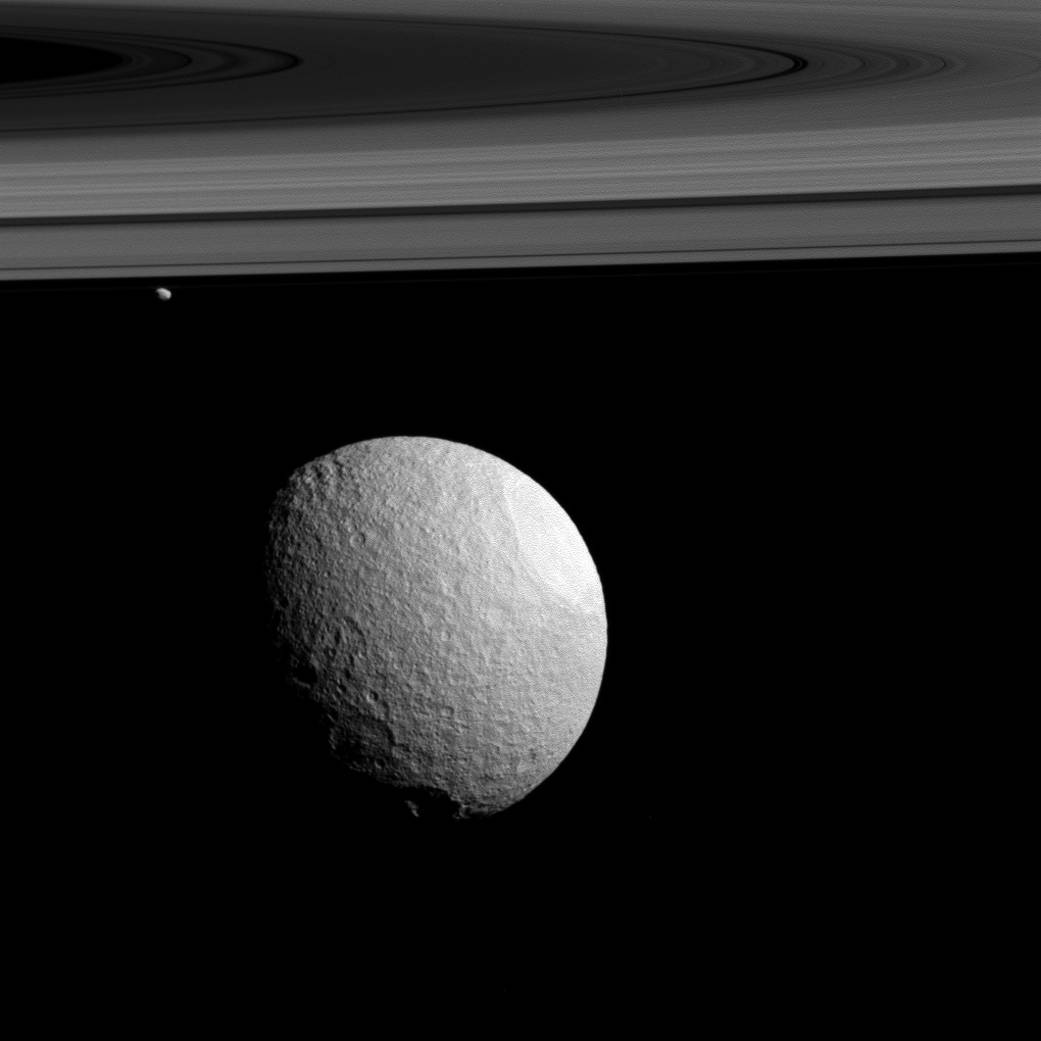Although Tethys and Janus both orbit Saturn and are both made of more or less the same materials, they are very different worlds. Their contrasts are related, in large part, to their sizes.
Tethys (660 miles or 1,062 kilometers across) is large enough to be spherical and to have varied geology, like chasms and smooth plains, along with some puzzling arc-shaped features (see PIA19637). Much smaller Janus (111 miles or 179 kilometers across) is irregularly shaped and has (so far) shown few signs of geologic activity apart from impact craters.
This view looks toward the sunlit side of the rings from about 1 degree above the ring plane. The image was taken in visible light with the Cassini spacecraft wide-angle camera on Nov. 23, 2015.
The view was acquired at a distance of approximately 28,000 miles (44,000 kilometers) from Tethys and at a Sun-Tethys-spacecraft, or phase, angle of 54 degrees. Image scale is 1.8 miles (3 kilometers) per pixel.
The Cassini mission is a cooperative project of NASA, ESA (the European Space Agency) and the Italian Space Agency. The Jet Propulsion Laboratory, a division of the California Institute of Technology in Pasadena, manages the mission for NASA’s Science Mission Directorate, Washington. The Cassini orbiter and its two onboard cameras were designed, developed and assembled at JPL. The imaging operations center is based at the Space Science Institute in Boulder, Colorado.
For more information about the Cassini-Huygens mission visit http://saturn.jpl.nasa.gov and https://www.nasa.gov/cassini. The Cassini imaging team homepage is at http://ciclops.org.
Image Credit: NASA/JPL-Caltech/Space Science Institute


























